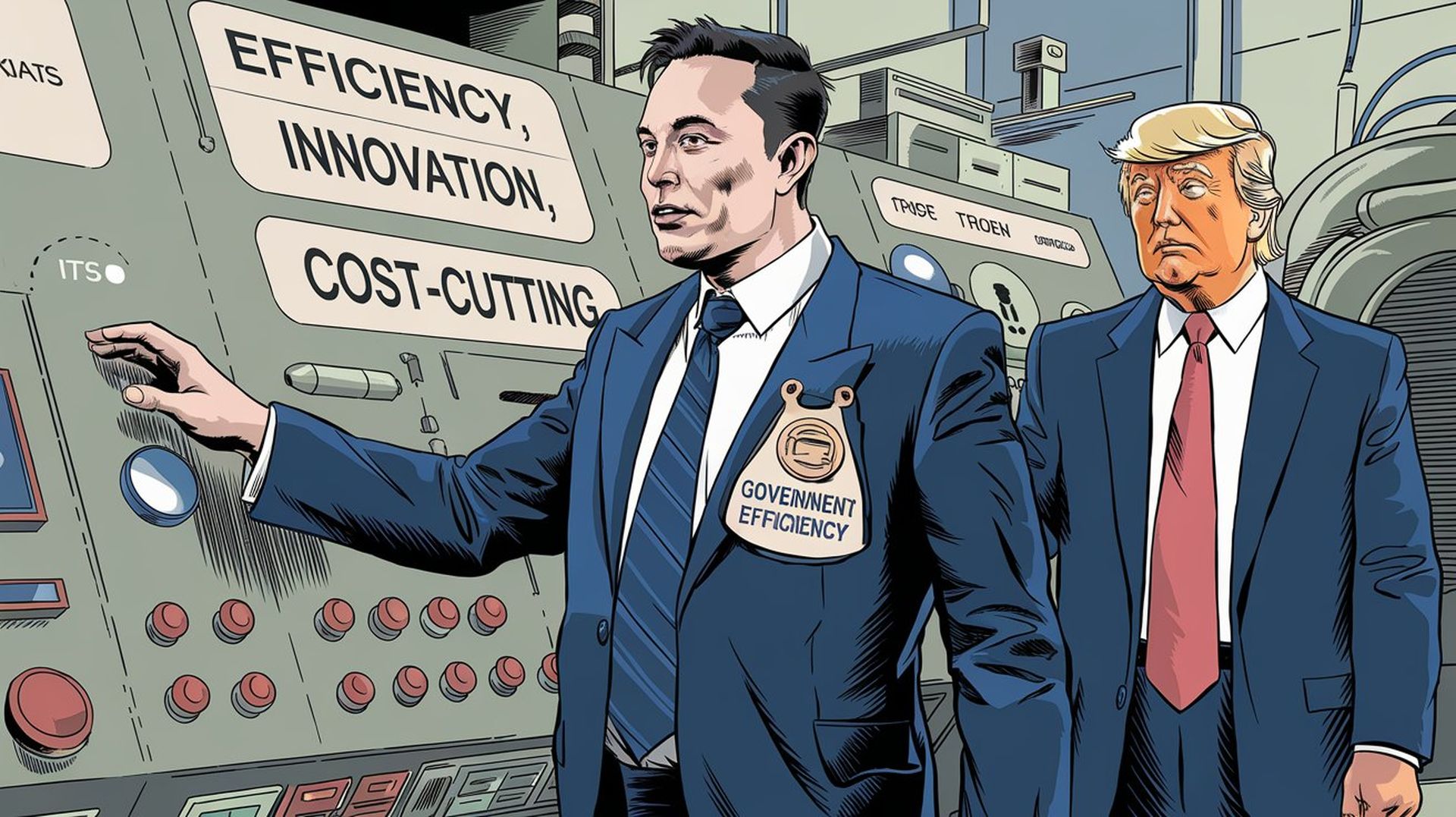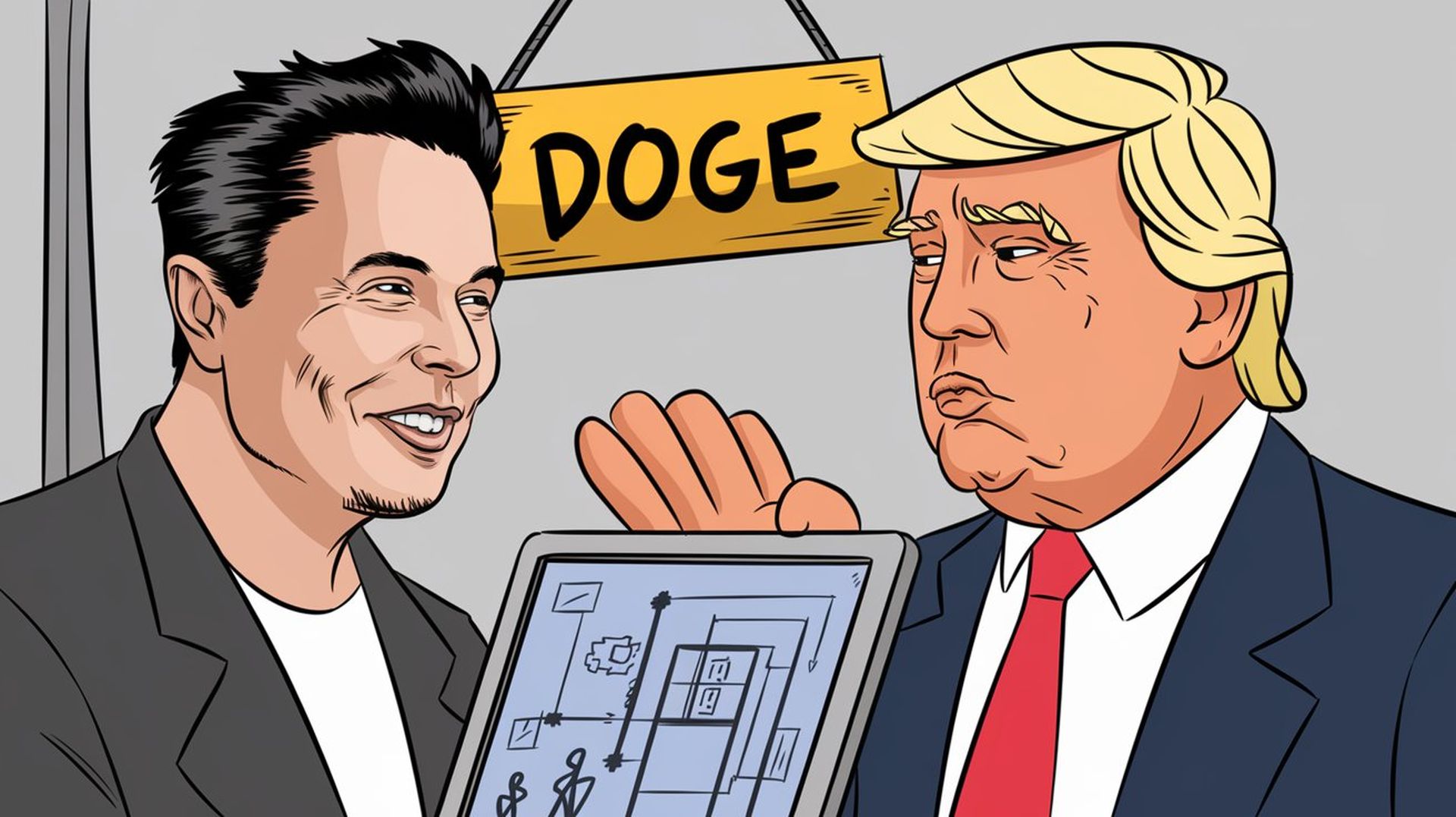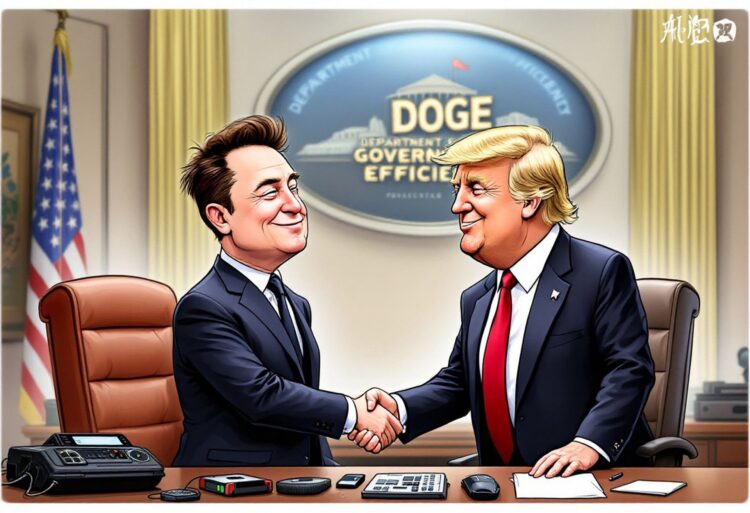Unsurprisingly, President-elect Donald Trump announced that one of his top advisors will be Elon Musk, CEO of Tesla and SpaceX, and the semi-autonomous artificial intelligence company xAI. However, in a mocking nod to the meme-based cryptocurrency he previously touted, Trump has promised to name Musk the head of a new Department of Government Efficiency, dubbed “DOGE” by Musk. The unprecedented role would give Musk control over federal spending, an initiative he’s toiled away at with his ‘Tesla method’ of simplifying processes and cutting costs.
It’s a surprising alliance, as Musk has often disagreed with Trump over environmental policies. When the U.S. withdrew, Musk quit Trump’s advisory councils on the Paris Accords in 2017. However, Musk’s public endorsement of Trump in the recent election was a turning point in the pair’s relationship, and it looks like the pair are on the cusp of starting a new chapter in Washington. Musk would have the new department working to streamline government functions, which he likens to trimming duplications and pushing responsibility around in the public sector.

Musk’s big plans for government reform
Musk has already sketched out several fantastic ideas for his potential new workplace, including a drive for a review of all federal agencies to eliminate any overlaps and increase efficiency. Musk explained his plans during a live stream Q&A session on election night when he said, “There’s a lot of duplicate responsibility where multiple agencies overlap.” It’s holding back progress.” He also proposed restructuring government roles, like federal employees moving to private sector jobs, with some support during that transition.
TRUMP: “We will land an American astronaut on Mars…Get going, Elon.” pic.twitter.com/Wsict6DSu5
— Breaking911 (@Breaking911) October 24, 2024
As Musk’s vision is nearly identical to Trump’s goal of slashing the size and spending of the federal government, the proposed department could hold a great deal of sway. Musk also hinted at controversial changes, such as the imposition of term limits for federal employees, which he said was needed to prevent bureaucracy from becoming “too entrenched.” He also drew an analogy, “Like a sports game, you don’t want more referees than players.” Musk’s methods may seem unconventional but are similar to those he used to dazzle at the helm of both Tesla and SpaceX, streamlining and automating to run more efficiently.

SpaceX, Tesla, and xAI brace for change
In addition to government reform, Trump’s approach to regulation will benefit Musk’s companies, most notably SpaceX and Tesla. Trump’s vocal support for Musk’s Mars ambitions and his bold goal to get American astronauts to land on Mars during his term in office may benefit SpaceX by enabling space initiatives to run faster. SpaceX, however, is a frequent critic of the Federal Aviation Administration, with Musk’s ability to bring his possible influence over regulatory bodies potentially making smoother launches easier.
The first Starships to Mars will launch in 2 years when the next Earth-Mars transfer window opens.
These will be uncrewed to test the reliability of landing intact on Mars. If those landings go well, then the first crewed flights to Mars will be in 4 years.
Flight rate will… https://t.co/ZuiM00dpe9
— Elon Musk (@elonmusk) September 7, 2024
At the same time, Tesla may benefit from Trump’s pledge to scale back electric vehicle subsidies—which many EV competitors use. Tesla, which already has a market share, can rely on that without subsidies, which should help the firm outpace rivals, says Wedbush analyst Dan Ives. This would be good news for Musk’s xAI, which might be able to float under the “light-touch” regulation optic, allowing the burgeoning AI firm to work under less restriction.
This partnership between Trump and one of the world’s biggest tech entrepreneurs, as Musk prepares to bring his tech-focused vision into federal reform, could shape government and industry in the future.
Image credit: Furkan Demirkaya/Flux





